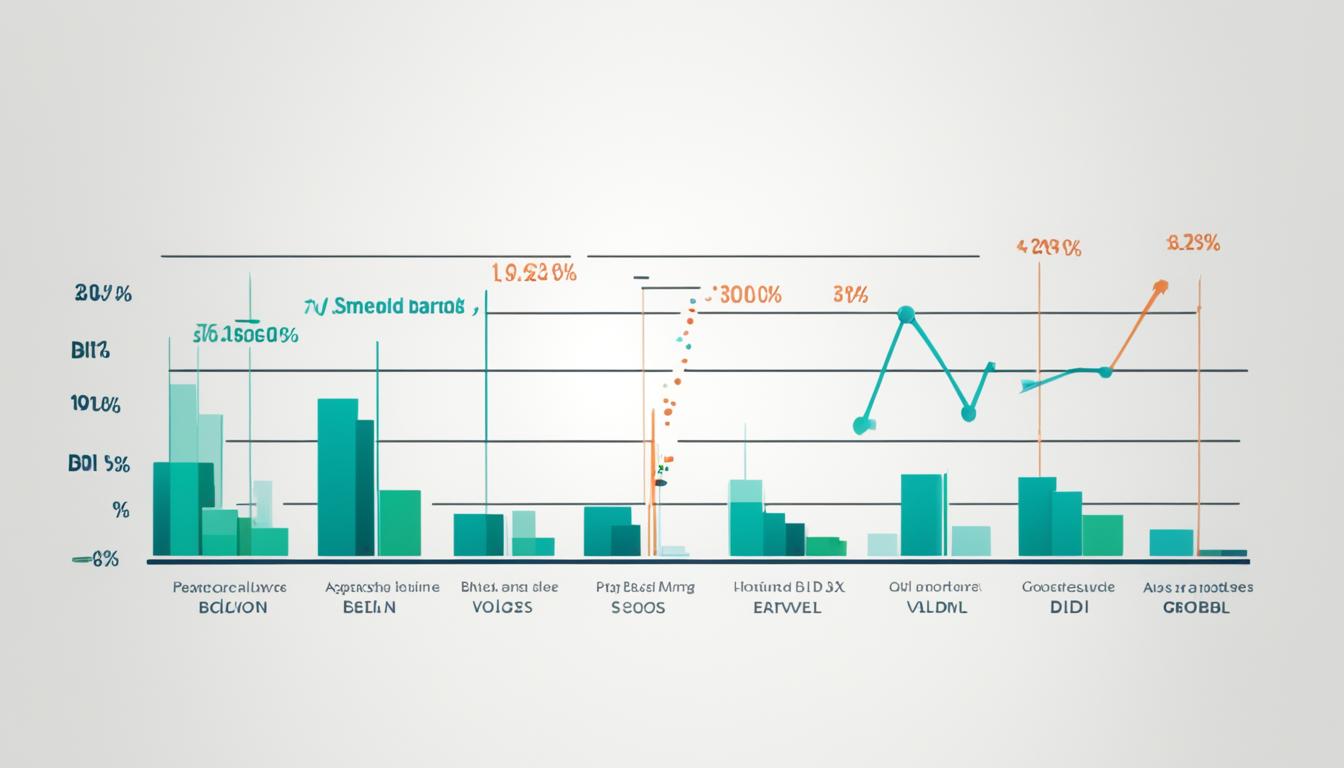Nikon, a Japanese multinational corporation known for its optics and imaging products, has been consistently successful in the competitive market. With a strong brand presence and loyal customer base, Nikon has implemented effective marketing strategies to maintain its position as a leader in the industry.
As part of Nikon’s marketing plan, the company focuses on brand promotion through various channels, including digital marketing and advertising tactics. By conducting thorough market research and competitive analysis, Nikon identifies key opportunities and develops strategies to target specific customer segments.
One of Nikon’s business strategies is to leverage its technical superiority and innovative product offerings. With a wide range of high-quality cameras and lenses, Nikon caters to different levels of photographers, from enthusiasts to professionals.
To enhance its online presence, Nikon has implemented a robust digital marketing strategy. By utilizing social media platforms, the brand engages with its target audience and encourages photo sharing, showcasing the capabilities of its products.
Through effective advertising tactics, Nikon creates emotional connections with consumers and builds brand equity. The brand’s promotion strategy includes collaborations with celebrities, advertisements, and interactive campaigns.
In conclusion, Nikon’s marketing strategy is focused on leveraging its technical superiority, engaging with the target audience through digital platforms, and continuously innovating to meet customer expectations. With a strong brand presence and a commitment to providing exceptional photography experiences, Nikon continues to be a leading player in the optics and imaging industry.
Key Takeaways
- Nikon’s marketing strategy focuses on brand promotion, digital marketing, and advertising tactics.
- The company leverages its technical superiority and innovative product offerings to cater to different customer segments.
- Nikon utilizes social media platforms to engage with its audience and encourage photo sharing.
- Emotional connections with consumers are built through collaborations with celebrities and interactive campaigns.
- Nikon’s commitment to providing exceptional photography experiences contributes to its strong brand presence.
The Beginning of Nikon and Launch of First Products
Nikon, previously named “Nippon Kogaku,” was founded in 1917 in Tokyo. It was established as Japan’s effort to modernize and develop domestic products. The company began by merging the optical instruments division of Tokyo Keiki, the mirror division of Iwaki Glass, and Fujii Lens Manufacturing. Its first products included binoculars and lenses, and it placed importance on importing technical knowledge from foreign industries. Nikon’s early innovations included the MIKRON binoculars and the Anytar lens, which was an imitation of European lenses.
Nikon’s Expansion and the Introduction of NIKKOR Lenses
Nikon embarked on a journey of expansion in 1939 by going public, marking a significant milestone in its history. This move allowed the company to reach a wider audience and introduce its first camera to the market in 1948. The introduction of Nikon cameras was met with resounding success, as they quickly gained recognition for their exceptional quality and performance.
During the Korean War, Nikon’s cameras and lenses proved their mettle in demanding conditions, capturing remarkable images that showcased the brand’s technical superiority. This solidified Nikon’s reputation as a trusted name in the photography industry.
In 1933, Nikon made a groundbreaking leap by introducing the NIKKOR lenses, which revolutionized the photography world. These lenses became synonymous with optical perfection, capturing images with stunning clarity, sharpness, and precision.
Nikon positioned itself as a leader in the industry, leveraging its technical expertise and innovative products to cater to the evolving needs of photographers. The brand’s expansion and the introduction of NIKKOR lenses marked a significant turning point in its history, setting the stage for future advancements and establishing Nikon as a powerhouse in the photography world.
NIKKOR Lenses: Unparalleled Optical Excellence
NIKKOR lenses are renowned for their unparalleled optical excellence. They are meticulously crafted to deliver exceptional image quality, capturing every detail with precision and clarity. Whether it’s capturing breathtaking landscapes or freezing fast-paced action, NIKKOR lenses consistently deliver stunning results.
With a wide range of focal lengths and apertures, NIKKOR lenses offer photographers the versatility they need to explore their creativity. From wide-angle lenses that capture expansive scenes to telephoto lenses that bring distant subjects closer, NIKKOR lenses provide endless possibilities.
| NIKKOR Lens Series | Features |
|---|---|
| Z Series | Designed for mirrorless cameras, these lenses offer outstanding optical performance in a compact and lightweight design. |
| AF-S Series | Equipped with Nikon’s Silent Wave Motor technology, these lenses provide fast and quiet autofocus for precise and reliable performance. |
| PC-E Series | Tilt-shift lenses that enable photographers to control perspective and depth of field, allowing for creative and unique image manipulation. |
| Micro Series | Macro lenses that excel at close-up photography, capturing intricate details with exceptional sharpness and clarity. |
From professional photographers to hobbyists, NIKKOR lenses have become the lens of choice for capturing unforgettable moments. With their optical precision, technological advancements, and commitment to excellence, NIKKOR lenses continue to push the boundaries of what is possible in photography.
Nikon’s Success in the Mid-20th Century
During the mid-20th century, Nikon achieved significant milestones in the global photography market. The company focused on high-end products and implemented clever marketing strategies. It gained recognition for its cameras’ performance and image quality, breaking the stereotype that Japanese cameras were inferior to European counterparts. Nikon’s success contributed to the development of image cultures and the recognition of the “Made in Japan” stamp as a symbol of excellent performance. The brand capitalized on its technical expertise and diversified its business into other areas, such as microscopes and industrial equipment.
Nikon’s Product Advancements
Nikon’s commitment to technical excellence and innovation led to significant product advancements during the mid-20th century. The brand continuously pushed the boundaries of camera technology, introducing features that revolutionized photography. One notable milestone was the launch of the Nikon F in 1959, the world’s first single-lens reflex (SLR) camera with interchangeable lenses. This groundbreaking camera set the standard for professional photography and positioned Nikon as a leader in the industry.
Over the years, Nikon continued to refine its cameras, introducing advancements such as autofocus systems, metering technologies, and image stabilization. These innovations enhanced the ease of use and image quality, further solidifying Nikon’s reputation for producing top-of-the-line cameras.
Nikon’s Marketing Strategies
Nikon’s marketing strategies played a crucial role in the brand’s success during the mid-20th century. The company focused on targeting professional photographers and enthusiasts who valued superior image quality and performance. Nikon positioned itself as a trusted and reliable brand through strategic partnerships with professional photographers, highlighting their work captured with Nikon cameras in advertisements and promotional materials.
The brand also invested in comprehensive marketing campaigns and effective advertising tactics to build brand awareness and attract customers. Nikon’s marketing efforts emphasized the technical superiority of its products, showcasing the capabilities of its cameras through stunning imagery and compelling storytelling. By highlighting the unique features and benefits of Nikon cameras, the brand created a strong emotional connection with its target audience.
In addition to traditional advertising, Nikon actively engaged with photographers through events, workshops, and sponsorships. The brand’s commitment to fostering a community of passionate photographers helped build brand loyalty and advocacy.
| Nikon Milestones | Description |
|---|---|
| 1959 | Launch of the Nikon F, the world’s first SLR camera with interchangeable lenses. |
| 1971 | Introduction of the Nikon F2, featuring a robust build, improved metering, and a wider range of accessories. |
| 1988 | Release of the Nikon F4, the first camera to incorporate autofocus technology within the camera body. |
| 1999 | Introduction of the Nikon D1, the first professional digital SLR camera. |
Nikon’s dedication to product advancements and effective marketing strategies propelled the brand to new heights in the mid-20th century. The company’s commitment to technical excellence and innovation, combined with its strategic focus on high-end products and clever marketing tactics, solidified Nikon’s position as a leader in the global photography market.
Segmentation, Targeting, and Positioning of Nikon
Nikon employs a strategic approach to segmentation, targeting, and positioning to effectively reach its diverse customer base. By understanding the unique needs and preferences of different market segments, Nikon can tailor its marketing efforts to resonate with camera enthusiasts, amateur photographers, and professionals.
Nikon’s segmentation strategy is based on demographics, taking into account factors such as age, income level, and photography experience. This allows the brand to create targeted messages and offerings that appeal to specific customer groups. For example, Nikon may develop entry-level cameras and lens kits for beginners or high-end professional-grade equipment for established photographers.
When targeting its market segments, Nikon positions itself as a trustworthy and creative provider of diverse products, services, and solutions. The brand leverages its heritage and long-standing reputation for exceptional optics and design to differentiate itself from competitors. Nikon’s commitment to innovation and continuous improvement ensures that it stays at the forefront of the photography industry.
One of Nikon’s key competitive advantages lies in its ability to combine technical expertise with effective advertising strategies. The brand’s marketing campaigns showcase the versatility and capabilities of its products, capturing the attention and imagination of its target market. By positioning itself as a leader in the industry, Nikon attracts customers who value quality, reliability, and innovation.
Nikon Competitive Advantage
Nikon’s competitive advantage stems from its long history, renowned brand reputation, and focus on delivering high-quality optical products. The brand’s commitment to innovation allows it to continually meet the evolving needs of its target market. Nikon’s competitive advantage lies in its ability to consistently produce superior optics, delivering exceptional image quality and performance.
Competitive Analysis of Nikon
Nikon faces tough competition in the optics and imaging industry from well-established brands such as Canon, Sony, Olympus, Panasonic, and Fuji. Despite this competition, Nikon has managed to maintain a strong position in the market thanks to a combination of factors.
One of Nikon’s strengths lies in its broad product portfolio, which caters to the diverse needs of photographers. From entry-level DSLRs to high-end professional cameras, Nikon offers a range of options for consumers at every level of expertise. This extensive product lineup allows Nikon to capture a larger share of the market and cater to a wide range of customer preferences and budgets.
Additonally, Nikon has a strong geographic presence worldwide. With operations in 70 countries, the brand has established itself as a global player, reaching customers across different regions. This diversified presence not only helps Nikon tap into various markets but also provides a cushion against regional economic fluctuations and changing consumer demands.
Nikon’s alternative revenue sources also contribute to its competitive advantage. The company has expanded its business into areas such as microscopy and industrial equipment, reducing its reliance on camera sales alone. This diversification allows Nikon to mitigate risks and stabilize its revenue stream, enhancing the brand’s stability and longevity in the market.
When it comes to market share for interchangeable lenses, Canon leads the pack with 49.1%, followed by Nikon with 24.9%, and Sony with 13.3%. While Nikon may have a smaller market share, it maintains a significant presence and continues to be a formidable competitor, known for its technical superiority and innovative products.
Nikon has built a strong brand equity over the years through its commitment to quality, technical excellence, and innovative solutions. The brand’s technical superiority sets it apart from competitors, and its advertising strategies effectively convey Nikon’s strengths to the target audience. By consistently delivering exceptional imaging experiences, Nikon has cultivated loyal customers who recognize and appreciate the brand’s value.
Overall, Nikon’s ability to compete successfully in the market can be attributed to its broad product portfolio, diversified geographic presence, and alternative revenue sources. As the brand continues to focus on technical excellence, good advertising strategies, and business diversification, Nikon is well-positioned to maintain and grow its market share while further enhancing its brand equity.
Distribution Strategy of Nikon
Nikon has established a robust distribution network to ensure its products reach customers efficiently. The company employs a multi-channel approach, encompassing physical stores, online platforms, and service centers.
Physical stores play a crucial role in Nikon’s distribution strategy. The brand has a strong presence in multi-brand stores, Nikon-specific stores, and supermarkets, allowing customers to explore and purchase Nikon products conveniently. These brick-and-mortar locations provide customers with a hands-on experience, enabling them to try out cameras and lenses before making a purchase.
In addition to physical stores, Nikon has capitalized on the growth of e-commerce platforms. By leveraging online marketplaces such as Amazon, Alibaba, and Flipkart, Nikon expands its reach and taps into a wider consumer base. Online platforms provide convenience and accessibility, allowing customers to purchase Nikon products from the comfort of their homes.
Nikon also emphasizes its online presence through its official website, where customers can explore the brand’s entire product lineup, learn about new releases, and access support resources. The website serves as a hub of information and acts as a direct channel for customers to engage with the brand.
Furthermore, Nikon recognizes the importance of after-sales service and customer support. To ensure customer satisfaction, Nikon has established service centers in major urban cities. These service centers offer timely support and repairs, enhancing the overall customer experience and contributing to increased sales through positive word-of-mouth.
By combining a diverse distribution network with digital platforms, Nikon has successfully reached a global customer base. With its extensive offline presence, online marketplace integration, and dedicated service centers, Nikon continues to meet the evolving needs of photography enthusiasts worldwide.
Brand Equity and Promotion Strategy of Nikon
Nikon understands the importance of brand equity in today’s competitive market. The brand aims to establish a strong connection with its target audience by portraying itself as a brand that captures the unique senses in the world. It seeks to create new values for images captured by its cameras, enabling customers to express their creativity and emotions.
To enhance brand equity, Nikon employs various promotional activities that showcase its products’ capabilities and engage with consumers. These strategies include impactful advertisements that highlight the superior image quality and features of Nikon cameras. The brand also collaborates with celebrities who resonate with its target market, leveraging their influence to enhance brand visibility and credibility.
Social media has become a powerful platform for brand promotion, and Nikon utilizes it effectively. The brand runs engaging social media campaigns that encourage user-generated content, allowing photographers to showcase their work and establish a sense of community. Through Nikon’s active presence on platforms like Instagram and YouTube, it can reach a wider audience and foster brand loyalty.
In addition to advertisements and social media, Nikon actively engages with its customers through its Nikon Digital Learning Center. This online resource provides valuable photography tutorials and tips, building a relationship of trust and expertise with the users of Nikon cameras. Nikon also organizes photography contests that encourage customer participation and offer opportunities for recognition and rewards.
Overall, Nikon’s brand equity and promotion strategy are centered around capturing the imagination and emotions of photographers. By effectively communicating its core values, showcasing product superiority, and fostering customer engagement, Nikon continues to strengthen its brand and maintain a competitive edge in the market.
Social Media Marketing Campaign of Nikon
Nikon, with its technical superiority in photo-taking, has developed a robust social media marketing campaign that caters to both professional and recreational photographers. The brand recognizes the power of social media platforms as a means to engage with its target audience and showcase the capabilities of its cameras.
Through platforms like Instagram, YouTube, and dedicated websites, Nikon encourages its fans to share their photos and actively engages with them. By fostering user-generated content and increasing engagement, Nikon bolsters its brand presence and cultivates a community of passionate photographers.
The social media marketing campaign allows Nikon to highlight the technical prowess of its cameras, sparking interest and driving awareness among its audience. Furthermore, it provides a platform for photographers to showcase their skills, inspiring others and creating a ripple effect of engagement and enthusiasm.
To further optimize its photo sharing initiative, Nikon could consider introducing photo sharing competitions and rewards. This would incentivize users to actively participate in the campaign and foster an even stronger sense of community and engagement.
Nikon’s Social Media Engagement Strategies
- Nikon actively responds to comments and inquiries on social media platforms, maintaining a meaningful two-way conversation with its audience.
- The brand collaborates with photography influencers, amplifying its reach and tapping into their dedicated fan bases.
- Nikon leverages its vast collection of user-generated content to showcase the versatility of its cameras and inspire others.
- Through behind-the-scenes content and tutorials, Nikon offers valuable insights and tips for photographers at all skill levels.
Leveraging Technical Superiority with Social Media Strategy
Nikon’s success in the competitive photography industry can be attributed to its ability to leverage its technical superiority through an effective social media strategy. The brand recognizes the diverse needs of photographers and ensures that its social media platforms cater to both serious and recreational photographers, thereby bridging the gap between professionals and hobbyists.
One of the key ways Nikon highlights its technical expertise is through educational content. The brand provides tutorials, guides, and discussions on its social media channels, allowing photographers to enhance their skills and maximize the capabilities of Nikon cameras and lenses. By sharing insights and techniques, Nikon positions itself as a trusted source of knowledge, solidifying its reputation as a leader in the industry.
Nikon’s social media strategy also involves collaborating with photography influencers. By partnering with renowned photographers and content creators, Nikon enhances its credibility and reach on social platforms. These collaborations not only showcase the technical superiority of Nikon products but also inspire and engage with the target audience.
Through social media, Nikon effectively showcases the capabilities of its cameras and lenses. The brand harnesses the power of visual storytelling, using platforms like Instagram and YouTube to share stunning images and videos captured with Nikon equipment. By demonstrating exceptional image quality, low-light performance, and advanced features, Nikon instills confidence in its audience and attracts potential customers.
Nikon’s social media strategy extends beyond product promotion. The brand actively engages with its followers, encouraging them to share their own photographs and experiences using Nikon equipment. By featuring user-generated content, Nikon creates a sense of community and fosters a deeper connection with its audience. This engagement not only boosts brand loyalty but also serves as a valuable tool for market research, providing insights into customer preferences and trends.
In conclusion, Nikon’s effective social media strategy leverages the brand’s technical superiority to engage, educate, and inspire photographers of all levels. By showcasing its expertise, collaborating with influencers, and actively involving its audience, Nikon solidifies its position as a trusted industry leader and continues to captivate photography enthusiasts around the world.
Tactical Advantages of Nikon’s Technical Superiority
Nikon’s technical superiority provides the brand with distinct tactical advantages that set it apart in the photography industry. With its wide range of lenses and camera equipment, Nikon offers unparalleled options for photographers of all levels. From amateurs to professionals, Nikon caters to the diverse needs and preferences of its target audience, cementing its position as a trusted brand.
One of Nikon’s key tactical advantages is its Nikon Digital Learning Center. This platform serves as a hub for photographers to enhance their skills and explore new creative possibilities. Through tutorials, workshops, and online resources, Nikon leverages its technical expertise to provide valuable educational content to its customers. By fostering a close relationship with its audience, Nikon builds loyalty and creates a sense of community among photographers.
Moreover, Nikon’s technical expertise enables the brand to continuously improve image quality, functionality, and features across its product range. Through extensive research and development, Nikon stays at the forefront of technological advancements in the photography industry. This commitment to innovation ensures that Nikon cameras and lenses deliver exceptional performance and meet the evolving needs of photographers.
By prioritizing technical superiority, Nikon establishes itself as a reliable choice for photographers seeking the highest quality equipment. The brand’s unwavering dedication to providing exceptional photography experiences instills confidence and loyalty among customers. Nikon’s commitment to excellence serves as a testament to its technical expertise and further solidifies its market position.
To summarize, Nikon’s technical superiority translates into tactical advantages for the brand. The wide range of product offerings, coupled with the Nikon Digital Learning Center, enables Nikon to cater to its target audience effectively. Continuous improvements in image quality and functionality contribute to customer satisfaction and brand loyalty. Nikon’s unwavering commitment to technical excellence positions the brand as a leader in the photography industry.
Conclusion
Nikon has solidified its position as a leading brand in the optics and imaging industry. Through its commitment to innovation, strong brand presence, and strategic marketing initiatives, Nikon has successfully captivated its target audience and cultivated brand loyalty. The brand’s marketing strategy revolves around leveraging its technical superiority, engaging with customers through various platforms, and continuously pushing the boundaries of camera technology.
Looking to the future, Nikon aims to advance its camera technology even further, ensuring it stays at the forefront of innovation. This commitment to continuous improvement will allow Nikon to meet and exceed customer expectations in an ever-evolving market. Furthermore, Nikon plans to expand its presence into new markets, seeking opportunities to connect with even more photography enthusiasts around the globe.
As Nikon moves forward, it will continue to focus on fostering brand loyalty and advocacy through its exceptional products, customer-centric approach, and memorable advertising campaigns. By staying true to its core values and embracing the ever-changing landscape of the photography industry, Nikon is poised to thrive in the years to come.







